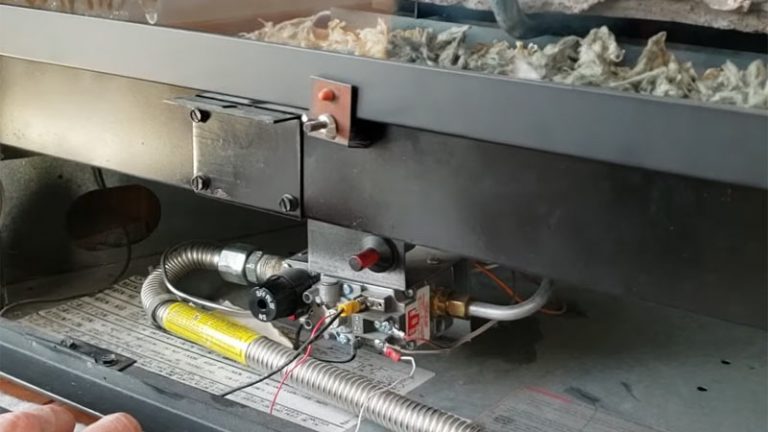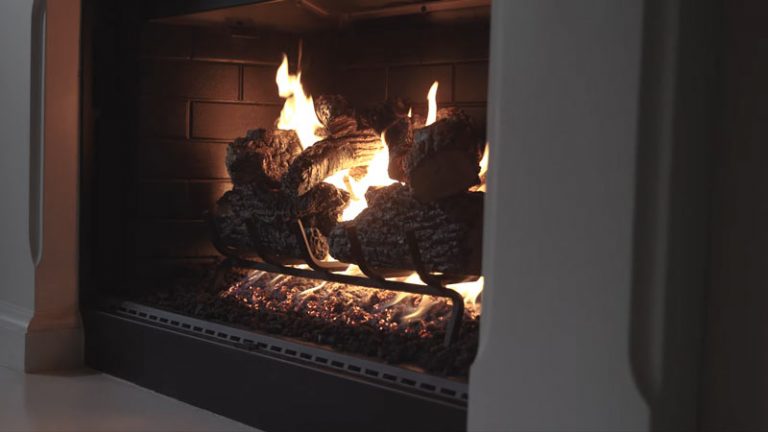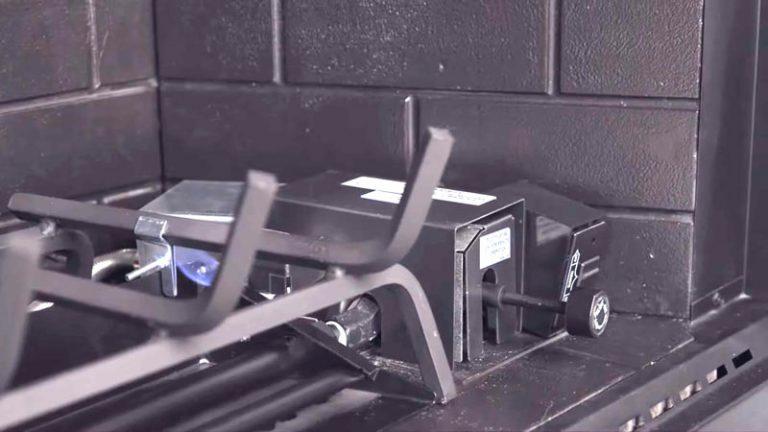Does Creosote Logs Really Work

If you’re looking to clean your fireplace flues and get rid of creosote residue, there’s a better way to do it. You can use a steam cleaner instead of chimney sweeps and log cleaners.
Keep your chimney clear for proper venting so the smoke doesn’t build up inside your home- Chimneys play an important role in ventilation. Sweeping logs or using a sweep may not be effective when it comes to cleaning fireplaces- use a steam cleaner instead.
Not only is this method more efficient, but you’ll also avoid potential damage to your home from poor chimney care
You'll Learn About
Does Creosote Logs Really Work?
Sweeping chimney debris and creosote residue can be a hassle, but there’s an easier way to clean your fireplace flues and get rid of the build-up. You don’t need a special tool or equipment to do this – just use a steam cleaner.
Keep your chimney clear for proper venting by cleaning it at least once every two years – even if you’re not using your fireplace. Know when fireplaces are safe to use and keep combustibles away from them – including logs and woodchips from sweeping up..
Finally, make sure you have adequate safety measures in place should something go wrong while using your fireplace: wear gloves, avoid getting close to the flames, etc
Chimney Sweeps and Creosote Sweeping Logs Aren’t Effective
Sweeping logs made of creosote are not effective in removing chimney soot and smoke. Creosote is a petroleum-based product, which can damage your property if it enters the environment or gets on your skin.
Sweeping with a traditional broom will also remove soot and smoke from the chimney; however, this method is less expensive than using a sweeper made of creosote logs. If you have to use a sweeper made of creosote logs, make sure to read the manufacturer’s instructions carefully before starting work to avoid injury or damage to your home.
There are other options for removing soot and smoke from your chimney such as hiring an expert chimney sweep or using professionally installed central heating and air conditioning systems
Better Way To Clean Fireplace Flues And Get Rid Of Creosote Residue
If you’re looking for a way to get rid of creosote residue and fireplace smoke, try using logs instead of creosote. The process is simple- all you need are some logs and water.
Allow the logs to soak in the water for at least an hour before scrubbing them clean with a brush or sponge. Be sure to ventilate your home well after cleaning as Creosote can be harmful if inhaled over time Follow these tips every time you clean your fireplace flues so that you eliminate any chances of Creosote build-up
You Can Use A Steam Cleaner Instead
If you have dirt, dust, and pet hair problem in your home, consider using a steam cleaner instead of creosote logs to clean. Creosote logs are effective for heavily soiled areas such as basements and attics but may not be the best choice for cleaning delicate surfaces or small spaces.
You can find both commercial-grade and homeowner versions of steam cleaners that are specifically designed for cleaning floors and carpets. Before using a steamer, be sure to read the manufacturer’s instructions carefully to avoid damaging your flooring or clothing. Always unplug your appliance before leaving it unattended so you don’t catch an electrical shock when in use
Keep Your Chimney Clear For Proper Venting
Creosote logs, also called creosote bark, are a popular way to clear your chimney of smoke and soot. However, there is no scientific evidence that creosote logs work as claimed and they may even be hazardous.
Keep in mind that using a chimney sweep or an expert is the safest way to clean your fireplace and improve the air quality in your home. If you have a gas fireplace, make sure it has been properly certified by the manufacturer before using creosote logs for cleaning purposes.
Finally, if you’re still interested in trying this method, always use caution and consult with an experienced professional before starting work on your chimney.
When should I burn a creosote log?
Creosote logs are used to clean the chimney and prevent soot buildup. Sweeping creosote logs once a month helps keep the chimney clear and free of debris.
The layer of creosote should be 1/8 of an inch thick before burning to avoid causing damage or injury in your home. Burning creosote logs only twice per year will minimize environmental impact while providing needed heat insulation for your home’s interior spaces.
How often should I use a creosote log?
To ensure proper fire safety, it is important to check your chimney Monthly and use a creosote log when needed. Creosote logs can last up to 6 months before needing replacement, so make sure you use them regularly.
Dispose of old logs safely by taking them to an approved recycling facility or burning them in a safe manner outdoors. Keep track of how often you have fired up your chimney by keeping records on the date and time of each fire lit.
How does the Creosote Sweeping Log work?
The Creosote Sweeping Log is a device used to measure the amount of creosote that has been released from a building. It does this by measuring the level of benzene in the air. In detail:
- A chimney sweep does not always need a chime sweeper. Sweeping with a log can be an effective way to clear creosote buildup from your fireplace flue, and cleaning the firebox after use is essential for optimal results.
- Always wear safety gear when sweeping and make sure the chimney is safe before entering by checking for any unsafe conditions such as open flames or hot embers.
- Sweepings made with logs will only work effectively if the chimney is completely free of all debris and ash, so it’s important to clean the fireplace every time you use it in order to achieve the best results.
- After using your Chimney Sweeper, make sure to empty out all of the sweepings into an appropriate container and then thoroughly clean the Firebox using a stiff brush or mop – this will help ensure that your Chimney Sweeper remains effective over time.
Do potato peels clean chimneys?
Potato peels may not be the most popular tool for cleaning your chimney, but they can help remove soot and other debris from the inside of the pipe. Just make sure to wear gloves and a face mask when using them, as potato peelings can contain harmful chemicals.
Chimney Cleaning
If you have a burning fireplace, the smoke from the fire can cause problems with your chimneys. Creosote build-up on the inside of your chimneys can block airflow and cause damage to your heating system.
Additionally, acorns that fall down into the fireplace will start adding smoky particles to the air already in circulation. This mixture can then get trapped in your chimneys and create serious problems for yourself and those around you.
Creosote buildup
Creosote is a byproduct of oil combustion which forms when oils are burned without purifying them first as required by law in most countries today including Canada.
This substance accumulates over time on exposed surfaces such as bricks, masonry, or metal flues, becoming an extremely thick tarlike substance that can drastically reduce heat transfer rates through walls and ceilings, leading to condensation, rot, and even structural failure. If left untreated it will also produce dangerous levels of carbon monoxide gas.
Burning Fireplace Fuel
The use of wood or other types of fuel in open fires puts added debris into the air stream which may eventually find its way up into your chimney system where it could be mistaken for smoke and lead to improper ventilation – ultimately causing creosote build-up and potentially serious fire safety risks.
In addition, using unburned wood or kindling directly next to an open flame creates hazardous levels of soot (combustible material) which could easily ignite while being thrown onto nearby furniture or fabrics – another common reason why people end up with perilous indoor fires. Lastly, throwing used matches onto live coals not only ignites all that messy stuff but also liberates carcinogens like benzene. Yuck.
Does burning aluminum cans help with creosote?
There is some debate over whether or not burning aluminum cans actually helps to reduce creosote build-up in a fire. Creosote, which is an oily substance, can be created when wood smoke meets rainwater and heat.
Burning cans may create more sparks that help to ignite the creosote, but it’s also possible that the intense heat from the flames will break down any of the chemicals present in the cans.
Burning Aluminum Cans Helps With Creosote
Aluminum cans are a popular choice for burning because they are cheap and easy to find. When these cans are burned, the heat from the fire helps to break down the creosote that forms on wood surfaces. This process is called pyrolysis and it happens as long as there is enough heat present.
The burning of aluminum cans will not have an impact on built-up creosote levels in your home or business.
There Will Not Be Much Of An Impact On Built-Up Creosote
There shouldn’t be too much impact.
To Recap
Creosote logs are an old-fashioned way to kill pests, but there is no evidence that they work. They can also harm your plants and the environment if you don’t dispose of them properly.






